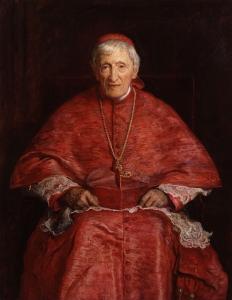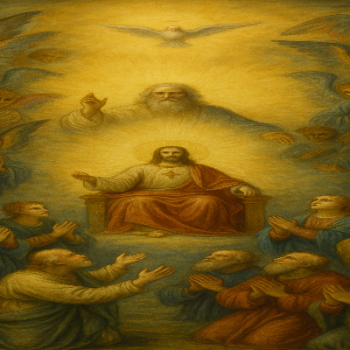
Is Catholicism a living thing? The idea (analogous though it may be) of the Catholic Church as a living entity is not unknown in the Bible. The analogy of bride and groom to refer to the Church (as the bride) and Jesus (as the groom) is used in various verses (e.g., Ephesians 5:22-33; Matthew 9:15).
Uniquely, the theologian and Cardinal John Henry Newman likened the Catholic Church to an organism that appropriates what is good and deters what is harmful or evil.
Extending the metaphor to Church doctrines, one sees these various doctrines develop and change over time. This leads to the question of the validity of these doctrines. If doctrines develop and change, how can we be certain that they have not become tainted to the point that they no longer represent what the early Church and Jesus intended?
To rectify this concern, John Henry Newman identified seven notes or criteria that ought to be applied to doctrines as a test of their faithfulness to the teachings of Christ and the Church fathers.
In this work, I will provide summaries of Cardinal Newman’s notes on the development of doctrine.
Preservation of Type
Newman suggests that doctrine can and should evolve and develop as it matures. An analogy would be that of childhood to adulthood. The child increases in size and knowledge, but he remains of the same essence; he remains a human being.
Similarly, a doctrine or idea may be subject to change. As such, a doctrine is more fully understood with time and reflection. An example might be how the doctrine of the Holy Trinity developed and matured with time. While the use of the plural to refer to God does appear in the Old Testament, it is only with a deeper understanding of the revelations provided by Jesus Christ that the Church began to develop its doctrine and teaching on the Trinity. And even this understanding of the Trinity was expanded and made more precise by the work of Tertullian, Augustine, and Aquinas.
Yet, despite how a doctrine may evolve or expand, the central idea must be preserved, and any changes must be consistent with the underlying premise of the doctrine.
Continuity of Principles
Accepting the fact that the ideas that provide the foundation for doctrines grow and evolve, the principles upon which the various doctrines are developed remain intact.
Cardinal Newman identifies nine principles that are foundational to the Catholic religion. They are dogma, faith, theology, sacraments, Scripture and its mystical interpretation, grace, asceticism, the harm of sin, and the potential of matter to be sanctified.
While the Church accepts that the understanding of these principles may be expounded upon, the continuity of the foundational principles of Catholicism protects against heresy.
Docetism provides an example. Docetism denied the Incarnation, claiming that Christ only appeared to have a human body and was instead a phantom. This teaching was not an advance in understanding the Incarnation, but rather a perversion of Scripture and Catholic theology. As such, Docetism was condemned as a heresy by the Church.
Power Of Assimilation
Perhaps in no other aspect of Cardinal Newman’s notes on doctrine does the concept of ideas (and the doctrines that emerge from them) being living things appear so strongly.
Newman observes that just as organisms assimilate resources such as food, water, and sunlight without experiencing a change in their nature, so too can ideas and doctrines develop and grow by incorporating other ideas into themselves without changing their fundamental nature.
An example of this note can be seen in the manner in which the Catholic Church appropriated the great western philosophical tradition to understand and explain various aspects of its teaching.
Logical Sequence
This note is perhaps the most critical when it comes to guarding against the corruption of doctrines and, subsequently, heresies.
Any doctrine that claims fidelity to the teaching of Christ and the early Church must be one that is logically consistent. Stated differently, any new doctrine must show itself to be a logical consequence or development of antecedent teaching.
Cardinal Newman explains this note by analogy. If one were to look upon a mature tree, he would not necessarily conclude that it is the result of a seed. Yet the tree is the logical development of a seed. Similarly, any contemporary teaching must be logically consistent with the Church’s teaching historically.
Anticipation Of Its Future
This particular note is, in a sense, an ancillary one to the note on the logical sequence.
A doctrine ought to be so construed that it allows for its logical development without devolving into corruption or heresy. That is to say; a thought-out doctrine is one where its consequences can be reasonably predicted.
Conservative Action
Here too, one sees the note of conservative action building upon the previous two notes.
For Newman, conservative action is intended to show that doctrines or their developments build on past theological reflections. Put differently, orthodox doctrinal developments ought to clarify and strengthen previous doctrines. In contrast, heterodoxy would contradict or even reverse the preceding consequences of doctrines.
An example of this note would be comparing the Apostles and Nicene Creeds. While the Nicene Creed is of greater length, it in no way contradicts the tenets of the Apostles Creed. Rather, the Nicene Creed builds and expounds upon the Apostles Creed.
Chronic Vigor
The seventh and final note is what John Henry Newman called chronic vigor.
Newman observes that corrupted or heretical teachings are often short-lived. They appear suddenly and may cause excitement but are soon repudiated, retreating into historical obscurity.
In contrast, orthodox doctrines remain abiding and vigorous while subject to growth and development.
Conclusion
The concept of ideas being analogical to organisms that evolve and develop is uniquely applied to Catholicism by Cardinal John Henry Newman.
In his work “Conscience, Consensus, and the Development of Doctrine,” Newman articulates seven notes that can be applied to doctrines and ideas to determine their validity. I have endeavored to provide a synopsis of these seven notes in this paper.












